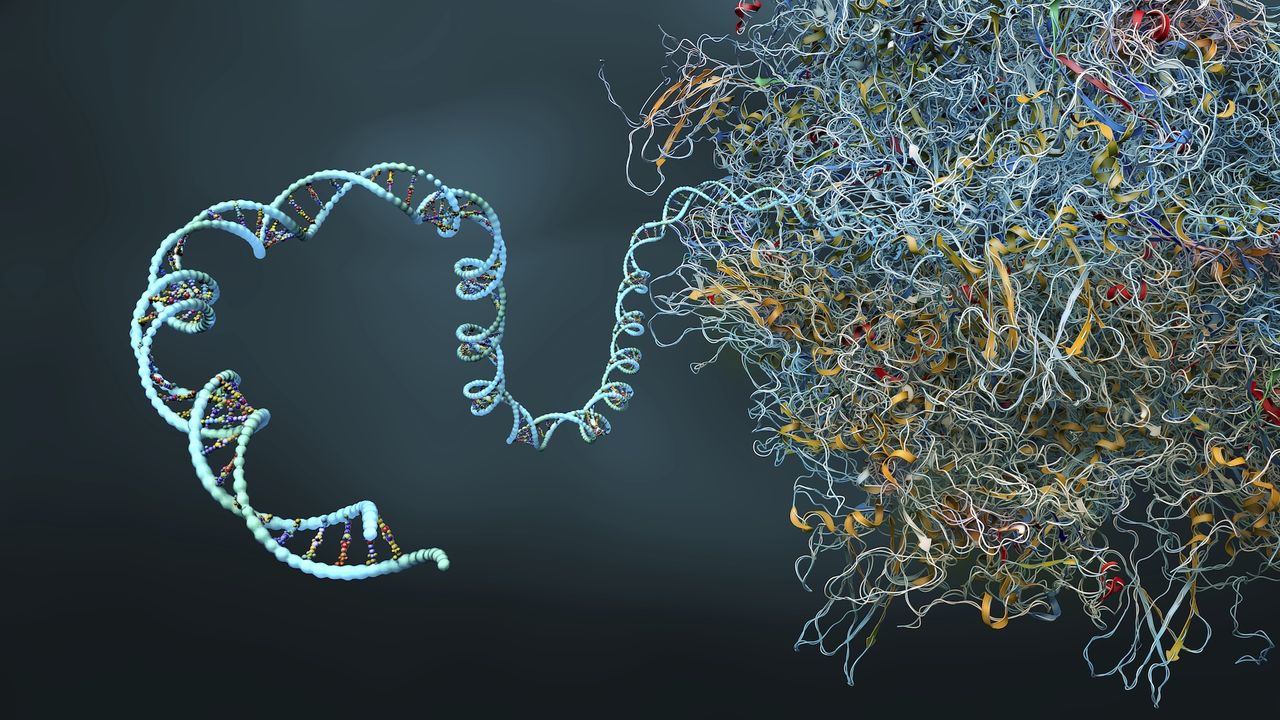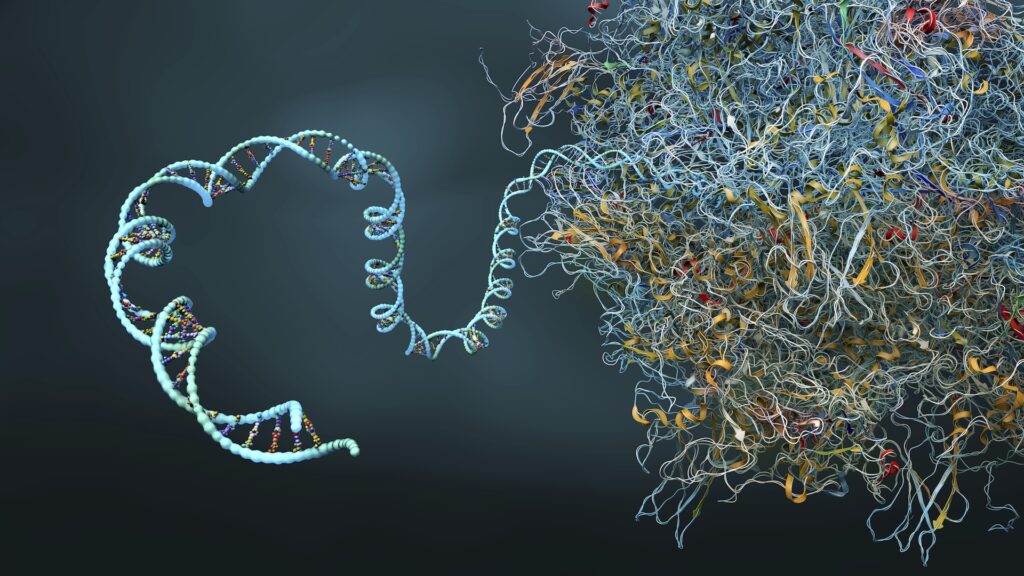
Researchers at IBM and Moderna have successfully used a quantum simulation algorithm to predict the complex secondary protein structure of a 60-nucleotide-long mRNA sequence, the longest ever simulated on a quantum computer.
Messenger ribonucleic acid (mRNA) is a molecule that carries genetic information from DNA to ribosomes. It directs protein synthesis in cells and is used to create effective vaccines capable of instigating specific immune responses.
It’s widely believed that all the information required for a protein to adopt the correct three-dimensional conformation is provided by its amino acid sequence or “folding.”
Although it’s made up of only a single strand of amino acids, mRNA has a secondary protein structure consisting of a series of folds that provide a given molecule’s specific 3D shape. The number of possible folding permutations increases exponentially with each added nucleotide. This makes the challenge of predicting what shape a mRNA molecule will take intractable at higher scales.
The IBM and Moderna experiment, outlined in a study first published for the 2024 IEEE International Conference on Quantum Computing and Engineering, demonstrated how quantum computing can be used to augment the traditional methods for making such predictions. Traditionally, these predictions typically relied on binary, classical computers and artificial intelligence (AI) models such as Google DeepMind’s AlphaFold.
Related: DeepMind’s AI program AlphaFold3 can predict the structure of every protein in the universe — and show how they function
According to a new study published May 9 on the preprint arXiv database, algorithms capable of running on these classical architectures can process mRNA sequences with “hundreds or thousands of nucleotides,” but only by excluding higher complexity features such as “pseudoknots.”
Pseudoknots are complicated twists and shapes in a molecule’s secondary structure that are capable of engaging in more complex internal interactions than ordinary folds. Through their exclusion, the potential accuracy of any protein-folding prediction model is fundamentally limited.
Understanding and predicting even the smallest details of a mRNA molecule’s protein folds is intrinsic to developing stronger predictions and, as a result, more effective mRNA-based vaccines.
Scientists hope to overcome the limitations inherent in the most powerful supercomputers and AI models by augmenting experiments with quantum technology. The researchers conducted multiple experiments using quantum simulation algorithms that relied on qubits — the quantum equivalent of a computer bit — to model molecules.
Initially using only 80 qubits (out of a possible 156) on the R2 Heron quantum processing unit (QPU),, the team employed a conditional value-at-risk-based variational quantum algorithm (CVaR-based VQA) — a quantum optimization algorithm modeled after certain techniques used to analyze complex interactions such as collision avoidance and financial risk assessment techniques — to predict the secondary protein structure of a 60-nucleotide-long mRNA sequence.
The previous best for a quantum-based simulation model, according to the study, was a 42-nucleotide sequence. The researchers also scaled the experiment by applying recent error-correction techniques to deal with the noise generated by quantum functions.
In the new preprint study, the team provisionally demonstrated the experimental paradigm’s effectiveness in running simulated instances with up to 156 qubits for mRNA sequences of up to 60 nucleotides. They also conducted preliminary research demonstrating the potential to employ up to 354 qubits for the same algorithms in noiseless settings.
Ostensibly, increasing the number of qubits used to run the algorithm, while scaling the algorithms for additional subroutines, should lead to more accurate simulations and the ability to predict longer sequences, they said.
They noted, however, that “these methods necessitate the development of advanced techniques for embedding these problem-specific circuits into the existing quantum hardware,” — indicating that better algorithms and processing architectures will be needed to advance the research.
